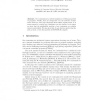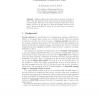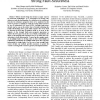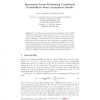503 search results - page 46 / 101 » Verifying Quantitative Properties Using Bound Functions |
79
Voted
CSL
2004
Springer
15 years 5 months ago
2004
Springer
Set constraints are a useful formalism for verifying properties of programs. Usually, they are interpreted over the universe of finite terms. However, some logic languages allow i...
TIT
2010
14 years 6 months ago
2010
This is the first part of a two-part paper on information-theoretically secure secret key agreement. In this part, we study the secrecy problem under the widely studied source mod...
FSTTCS
2003
Springer
15 years 5 months ago
2003
Springer
Tagging schemes have been used in security protocols to ensure that the analysis of such protocols can work with messages of bounded length. When the set of nonces is bounded, this...
IOLTS
2009
IEEE
15 years 6 months ago
2009
IEEE
—Robust circuit design has become a major concern for nanoscale technologies. As a consequence, for design validation, not only the functionality of a circuit has to be considere...
COLT
2004
Springer
15 years 5 months ago
2004
Springer
One of the nice properties of kernel classifiers such as SVMs is that they often produce sparse solutions. However, the decision functions of these classifiers cannot always be u...




